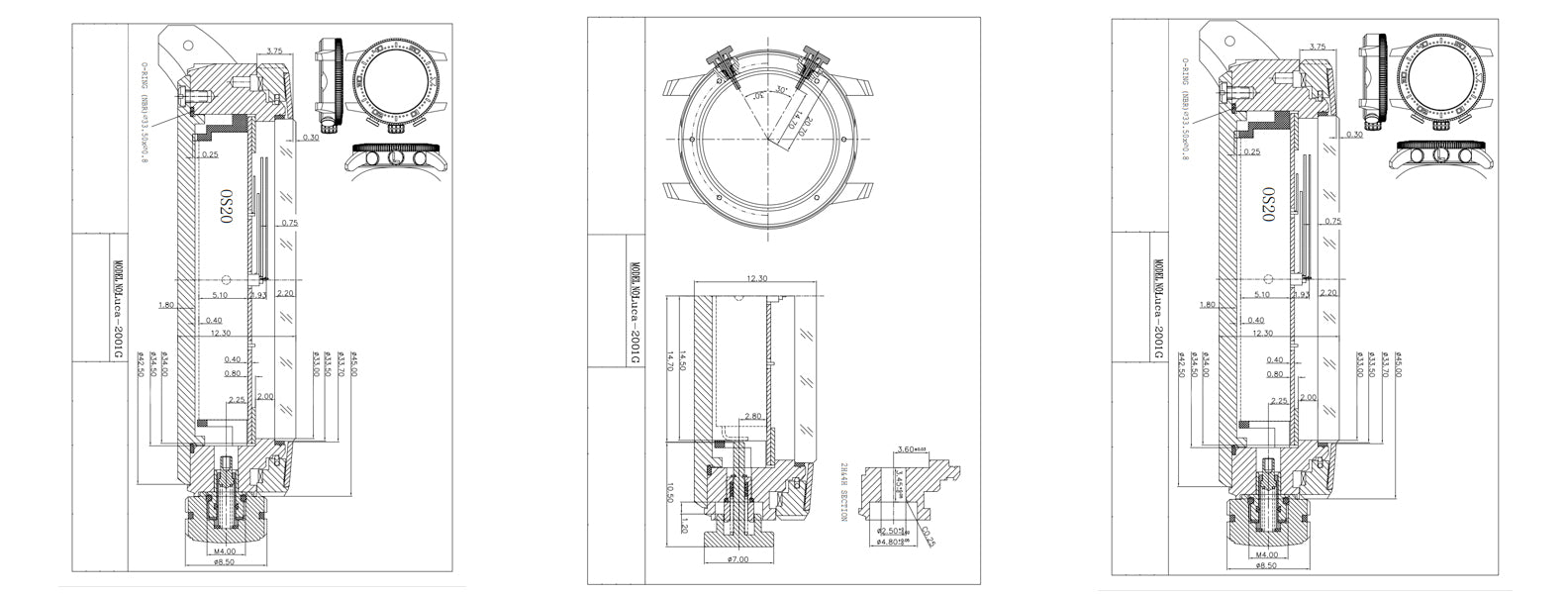
Unlocking the Secrets of Watch Movements: Exploring the Function and History of Popular Types
In the realm of horology, watch movements are at the heart of timekeeping precision. From the classic mechanical movements to the advanced quartz technology, each type has its own unique characteristics. In this blog post, we dive into the fascinating world of watch movements, exploring their functions and tracing their historical significance.
Join us on this journey as we uncover the secrets behind the most popular types of watch movements, providing valuable insights for LUCA customers and watch enthusiasts.
Mechanical Movements:
Mechanical movements have a long-standing tradition in watchmaking. They rely on a complex series of gears and springs to power the watch. As the wearer moves, the mainspring is manually wound or automatically wound through the motion of the wrist. Mechanical movements offer a captivating sense of craftsmanship and are appreciated for their intricate designs and precise engineering.
Automatic Movements
Automatic movements (A type of mechanical movement), also known as self-winding movements, offer the convenience of powering the watch without manual winding. They feature a rotor that rotates with the motion of the wearer's wrist, transferring energy to the mainspring. This movement type combines the charm of traditional mechanical movements with the ease of wear.
Quartz Movements
Quartz movements revolutionized the watch industry with their accuracy and reliability. They rely on the oscillations of a quartz crystal to regulate timekeeping. A battery powers the movement, creating an electric charge that keeps the crystal vibrating consistently. Quartz movements are celebrated for their precision and low maintenance, making them a popular choice for many watch enthusiasts.
Automatic Quartz Movements
Combining the best of both worlds, automatic quartz movements offer the accuracy of quartz technology with the self-winding feature of automatic movements. These movements use a rotor to generate electrical energy that is then stored in a rechargeable battery. This hybrid movement ensures high precision and eliminates the need for regular battery replacements.
Kinetic Movements
Kinetic movements, pioneered by Seiko, blend mechanical and quartz technologies. These movements utilize the motion of the wearer's arm to generate electrical energy, which is stored in a rechargeable battery. Kinetic movements offer the accuracy of quartz watches while maintaining a connection to traditional mechanical movements.
Solar Movements
Solar movements harness the power of light to generate energy. A solar panel on the watch dial converts sunlight or artificial light into electrical energy, which is stored in a rechargeable battery. These movements are eco-friendly, low-maintenance, and provide long power reserves.
Manual Wind Movements
Manual wind movements require the wearer to manually wind the watch using the crown. This traditional movement type is appreciated for its connection to watchmaking heritage and the ritual of winding the watch.
Dual-Time Movements
Dual-time movements, also known as GMT movements, allow the wearer to track two time zones simultaneously. These movements feature an additional hand or subdial that indicates the second time zone, enabling travelers or individuals with global connections to easily manage multiple time zones.
Skeleton Movements
Skeleton movements showcase the inner workings of the watch by exposing the intricate gears, springs, and escapement mechanism. These movements offer a mesmerizing visual experience, providing a glimpse into the mechanical mastery behind the timepiece.
Tourbillon Movements
Tourbillon movements are considered the pinnacle of watchmaking craftsmanship. These intricate movements feature a rotating cage that holds the escapement, counteracting the effects of gravity to enhance accuracy. Tourbillon movements are highly sought after by watch enthusiasts and are synonymous with luxury and prestige.
Final thoughts
Watch movements are the beating hearts of timepieces, each with its own unique characteristics and historical significance. From the timeless elegance of mechanical movements to the precision of quartz technology, each movement type offers a distinct experience for watch enthusiasts.
Whether you appreciate the intricate craftsmanship of a tourbillon or the convenience of an automatic quartz movement, understanding the functions and history behind different watch movements adds depth to your horological journey. At LUCA, we celebrate the artistry and innovation in watchmaking, offering our customers the exceptional performance of chronograph quartz movements. Explore our collection and find the perfect timepiece that matches your style, preference, and appreciation for watch movements.
We hope this comprehensive guide has provided valuable insights into the world of watch movements. Remember to choose a movement that aligns with your lifestyle, preferences, and the level of craftsmanship you seek.
Happy exploring and may your LUCA watch accompany you on countless memorable moments.